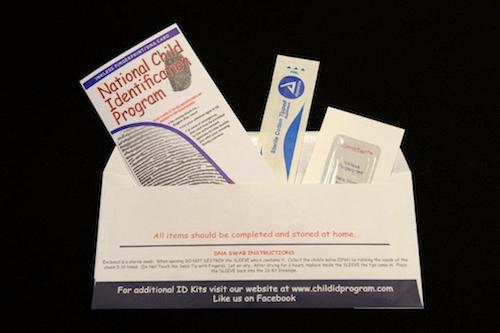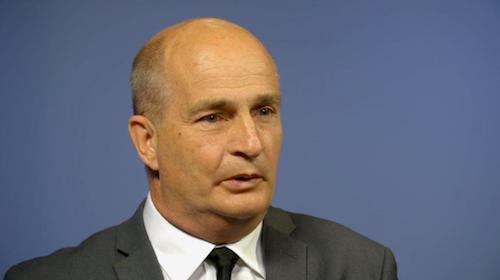It’s a horrible time when a child
is reported missing or abducted – a scenario parents understandably don’t want
to think about much.
Now, the IBEW has partnered with the National Child Identification Program to make it easier for members and their families to be prepared if faced with such a situation.
“You and I know there is nothing more important to us than our children’s safety,” International President Lonnie R. Stephenson said. “And yet, most of us aren’t prepared if something happens to them. We want to change that.”

|
| A look at the packet from the National Child Identification Program that will be provided to IBEW members to help locate missing children.
|
The International Office is providing about 750,000 child identification kits to local unions, which will distribute them to members. In the kits, parents and guardians are asked to include their child’s medical information, height, weight, fingerprints, a picture and a swab of their DNA. They store it in a safe place and provide it to police and other law enforcement if the child is reported missing.
“We see this as an opportunity to reach out to our members,” said Civic and Community Engagement Director Carolyn J. Williams, who is overseeing the program. “Nothing is more important to them than being able to take care of their children.”
About 800,000 children are reported missing in the United States each year and another 50,000 go missing in Canada. In the United States, about 450,000 of those children are runaways. Another 300,000 are taken by family members and about 58,000 are abducted by non-family members, according to the Department of Justice and the Center for Missing and Exploited Children.
The child identification program was started by the American Football Coaches Association in 1997, about one year after the murder of 9-year-old Amber Hagerman in Arlington, Texas. Police efforts to locate Hagerman, whose body was found four days after she was abducted, were slowed by a lack of fingerprints and DNA information.
Hagerman’s death was a catalyst for local and state governments to strengthen efforts to locate missing children. The activation of the child abduction system when a minor is reported missing is called the Amber Alert in her honor. It also sparked the coaches’ organization, which is based in nearby Waco, Texas, to act.
“We couldn’t imagine being in your house and looking for this information and not looking for your child,” said Kenny Hansmire, a former NFL wide receiver and the child identification program’s executive director since its inception.
“What is unique about our program is that it does not go into a database,” he said. “It is a child I.D. kit that you fill out at home and you keep it back for safety. You turn it over to law enforcement only if you need to.”
The program is affiliated with the National Sherrifs’ Association and works with law enforcement groups throughout the country. About 56 million kits have been distributed since the program’s founding with the help of various business, religious and civic groups.

|
| Kenny Hansmire, the executive director of the National Child Identification Program.
|
Labor unions also have played a key role, Hansmire said. He credits retired University of Michigan football coach Lloyd Carr for helping to set up a partnership between the program and the United Auto Workers to distribute kits to its members.
That opened the door to a partnership with the AFL-CIO and separate agreements to distribute kits to members of the American Federation of Teachers; American Federation of State, County and Municipal Employees; the International Union of Bricklayers & Allied Craft Workers; and the Association of Flight Attendants.
The program has been attractive to unions because it fits into a general theme for all of them, Hansmire said. That’s giving members another tool to take care of their family members and loved ones, he said. The IBEW’s involvement was welcomed, he added.
“The IBEW is kind of the golden child [of the union movement],” he said. “You can’t walk into a building anywhere without turning the lights on. You need electricity. Somewhere along the way, a union member somewhere in this country had a role in getting that to the building.”
The Media Department has produced a video on the IBEW’s partnership with the child identification program.
Members who would like to purchase additional kits can do so at the National Child Identification Program. Price is $4.95. They are also encouraged to check with local union officials to see if extra kits are available because members without children may not take one.
“I know we all love our children very much,” Stephenson said. “This small packet could be the most important thing that you do for them. Together, we can be part of the movement to keep all of our kids safe.”